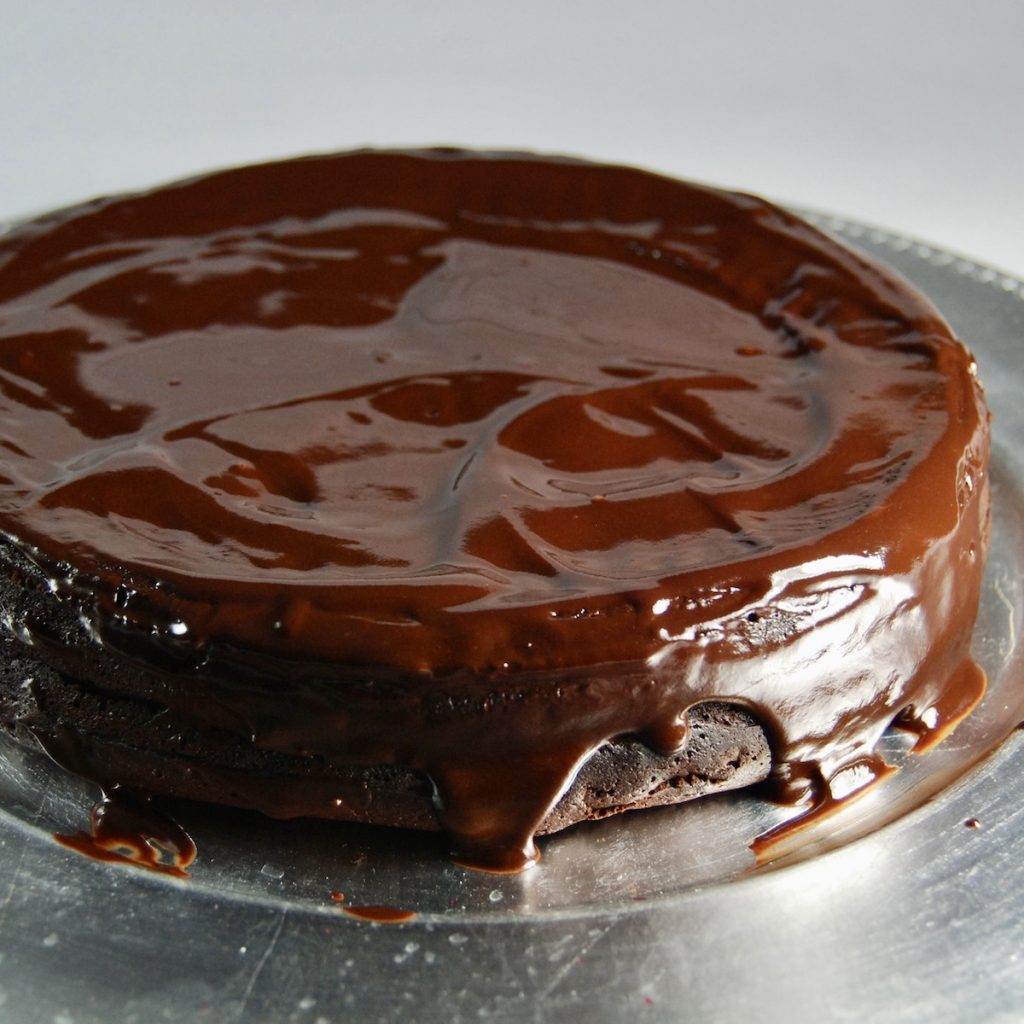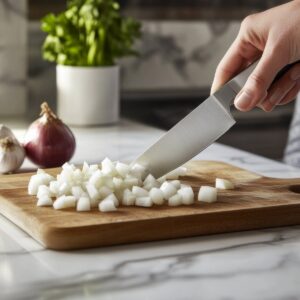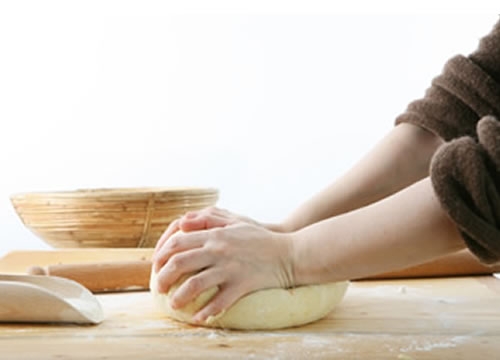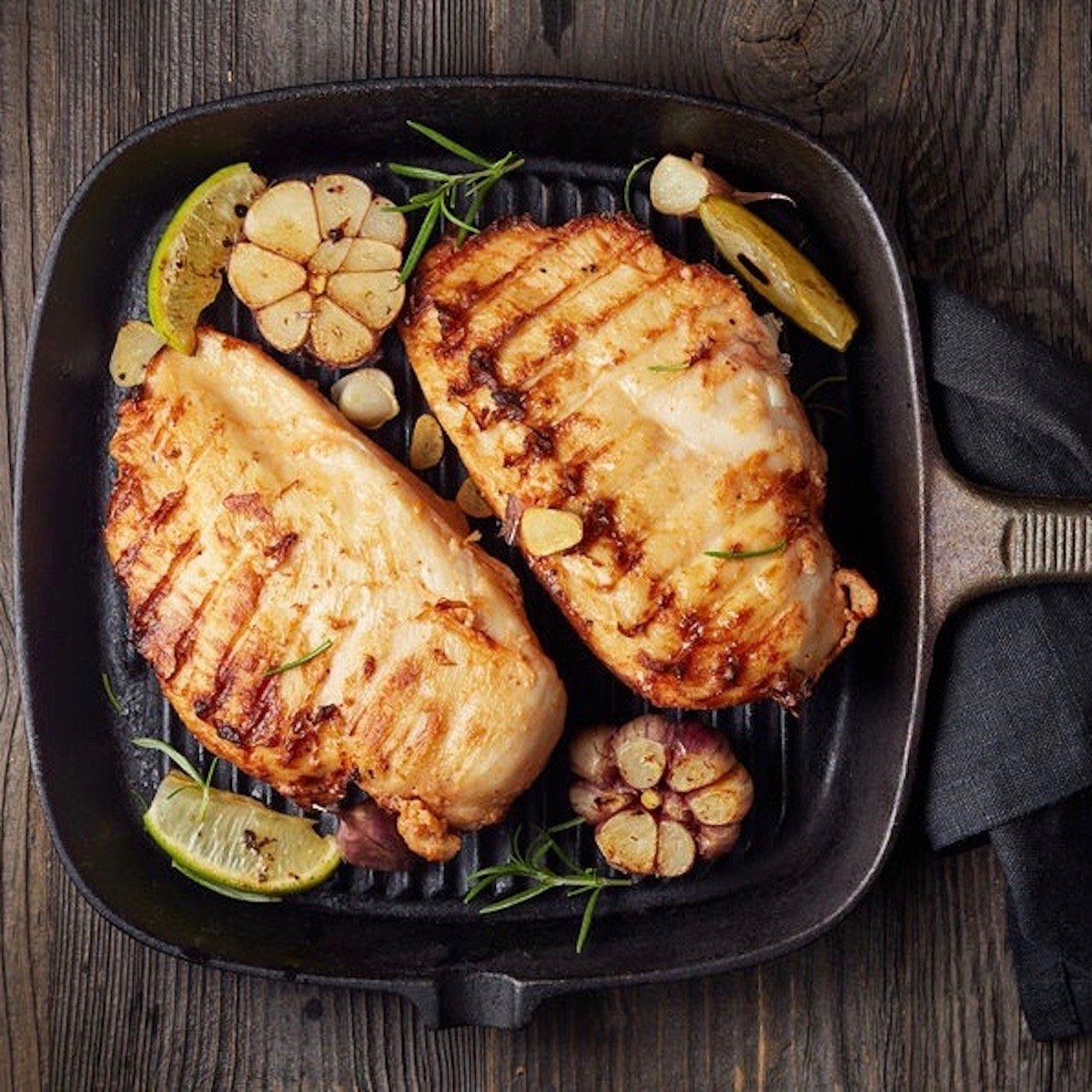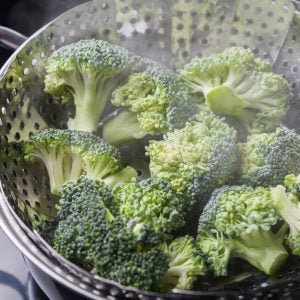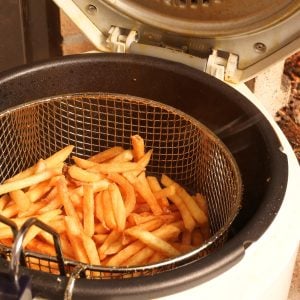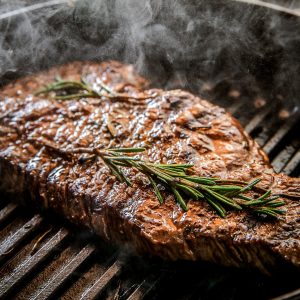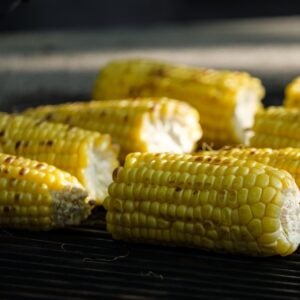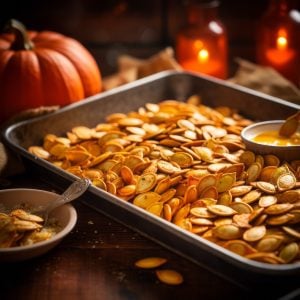Here are some common mistakes bakers make. Let’s fix them.
At first glance, baking appears to be a relatively straightforward cooking process. However, mistakes are inevitable, so let’s examine how to bake.
The definition of baking is to cook food with dry heat in an oven. The process is simple: Open the oven, put in food, and take out baked food.
As with most cooking methods, baking involves much more than might initially appear. In fact, of all the cooking techniques, this is the one I have the most difficulty with.
To me, baking is more left-brained because precise measurements and cooking times are required for optimal results. Too much or too little of this can result in a complete disaster.
A Little Baking History
Baking is an evolved cooking method. For example, Dutch ovens were made of heavy cast iron with a lid. Some models, called spiders, also had “feet” to raise the oven over a bed of coals.
The lids of old-fashioned Dutch ovens were flat and often set down below the top of the stove. This allowed coals to be piled on top of the oven to simultaneously promote even cooking from both the top and bottom.
A Dutch oven is a large metal container that delivers heat from all sides. Besides portability, the main difference between a Dutch oven and a modern oven is that food comes into direct contact with the sides of the Dutch oven.
You would never pour batter on the oven floor in your kitchen (I hope), but Dutch ovens were made to be both a cooking method and a cooking vessel.
Today’s ovens are thermostatically controlled and deliver heat from all sides. In baking, heat transfer occurs through convection (the rising and falling of heated air) and radiation (heat waves, or infrared energy, transferring to the food from the heated oven walls).
Conduction also plays a role as the heat from a hot baking dish transfers the heat to the food. Again, with a Dutch oven, this occurs naturally as the oven is the cooking vessel.
In modern ovens, conduction varies depending on the baking dish. Metal dishes or pans will conduct heat better than glass or the new silicone baking dishes.
Baking is similar to another cooking method: roasting. The definitions are almost identical. The main difference seems to be in temperature, with baking taking place at moderate heat (between 300˚F and 400˚F) and roasting occurring at higher temperatures (350˚F-450˚F).
As you can see, there is some overlap in temperature between the two methods. A further difference is in the types of foods being cooked. “Roast” is often used when referring to meats and vegetables, while “bake” refers to bread, cakes, and other pastries.
We’ll adopt that differentiation and discuss baking in terms of cakes, cookies, and bread. Now that you know a bit about baking and how it works, let’s look at some of the pitfalls you might encounter.
Baking Mistake #1a – Ignoring Mise en Place
When we think of mise en place (literally, to put in place), we think of chopping vegetables and mincing garlic for cooking. However, often, we need to consider baking.
Then, we wind up where ingredients are at different temperatures (eggs and milk might be cold from the refrigerator) and won’t blend well during mixing.
The Fix = Prior Preparation
It can be hard to remember to take the time to read through a recipe before you begin, but it can save you so much time in the long run. In a recipe, you’ll find out how much of each ingredient you need and how the ingredients are blended to get the desired result.
It’s inconvenient to suddenly realize that you need to toast some coconut before blending it into a batter or frosting or discover that you need to measure out a certain amount of spice when your hands are covered in butter or flour.
You can always measure and prepare each ingredient necessary to your recipe before baking.
Even more critical might be getting your ingredients measured well before it’s time to bake. This gives your refrigerated ingredients—eggs, some milk (cream, whole milk, buttermilk), and butter—time to reach room temperature.
This is important because when you try to mix wet ingredients (milk, water, buttermilk) with fats (butter) and dry ingredients (flour, baking powder, baking soda, dry spices). Everything will mix much more efficiently if they are at the same temperature.
Another consideration is that in The Creaming Method, the method most frequently employed to mix American-style cakes and cookies, the fat (butter) needs to be soft enough to whip and hold air bubbles but not so soft that it begins to melt.
The ideal temperature for your butter is between 67˚ and 70˚F. Once you cream your butter and get it all full of air, the last thing you want to do is chill it back down by adding cold eggs and/or milk.
Always measure out and prepare your ingredients well before baking so that there are no surprises and your components have plenty of time to reach a suitable working temperature.
The converse is also true.
Suppose a recipe calls for “melted and cooled” butter or chocolate. In that case, you do the melting well enough in advance that the ingredients have time to cool down to room temperature without re-solidifying.
While this probably will not take as long as letting ingredients warm up from refrigerator temperatures, ensure that your melted ingredients can cool to no warmer than skin temperature—about 95˚F.
Mistake 1b – Not Preheating Your Oven
I’m calling this mistake 1b because it goes along with thoroughly reading your recipe and preparing your ingredients.
Suppose your oven is not ready when all your ingredients are mixed. In that case, you could lose some volume (rise), especially as the chemical reactions in baking powder and baking soda that make bubbles begin to subside while waiting for your oven to heat up.
The Fix = Preparation
I cannot stress how important it is to prepare, prepare, prepare.
Unlike sautéing, which requires you to stand and tend the food you’re cooking, baking is about 90% preparation and only about 10% execution. Part of that 90% is preheating your oven.
Don’t believe me? Let’s look at how thermostatically controlled ovens work, and maybe I can convince you.
When you first turn your oven to the desired temperature, the range is constantly “on.” It is actively heating, usually from a heating element in the bottom of the box, until the air temperature inside the oven reaches the desired temperature.
This means that sustained heating occurs from one direction—the bottom during preheating. If you put delicate cake batters into a cold oven and then turn it on, your cake could end up with an over-browned bottom due to the sustained heating while the oven is preheating.
Furthermore, once your preheating alarm beeps, it only means that the air inside the oven has reached your desired temperature. Waiting for an additional ten to fifteen minutes after the preheating alarm goes off will ensure that all the oven’s walls, including the “ceiling,” are preheated.
This helps minimize the effect of the oven’s opening on the temperature in the oven.
If only the air is heated, it will spill out as soon as you open the oven door, requiring a long “recovery time” when the oven is preheating itself again. However, if you allow the oven walls to preheat, the recovery period will be shorter since a lot of heat is retained in the walls themselves – less chance of over-browned bottom syndrome.
There is one major exception to the preheating rule: in some cases, sustained heating from the bottom is what you want – bread is often started in a cold oven.
The intense heat at the beginning encourages an impressive oven spring. The yeast’s last gasp rises before the oven gets too hot, and the yeast dies.
Some old-fashioned cake recipes require you to start baking in a cold oven, but this is generally because they want to save fuel on preheating.
Back then, people didn’t have the luxury of turning a dial and touching a button. Instead, they had to build a fire in their ovens. As far as I can tell from my research, any of these old-fashioned recipes can be adapted to baking in a preheated modern oven.
You guessed it. This is problem 1c because preparing your pans should be part of your mise en place.
As we established early, most chemically leavened baked goods (those using baking powder and/or baking soda) must be put into the oven as soon as they are mixed. Stopping to grease a pan can be the difference between heavenly and heavy baked goods.
The Fix = Prepare, prepare, prepare
A well-written recipe should tell you everything you need to know about your mise en place, including amounts of ingredients, any chopping/dicing/warming/cooling that needs to happen, and how to prepare your pans. Depending on what you’re baking, the recipe could call for anything from plain baking sheets to Bundt pans that have been greased and floured.
To avoid surprises, read your recipe at least once and follow directions. Get your prep prepared beforehand so you can focus on the mixing.
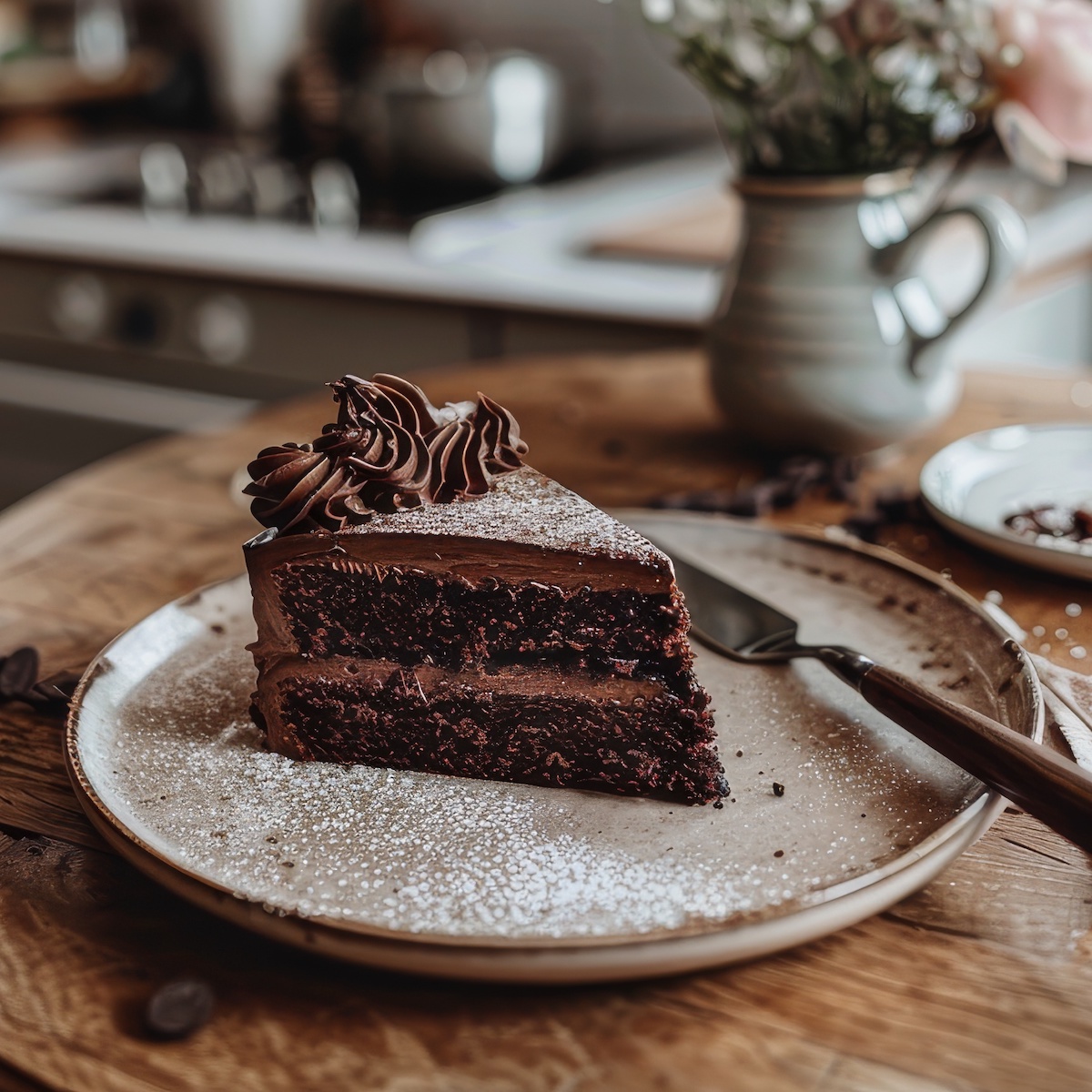
Mistake #2 – Improper Measuring
Some recipes are straightforward: one cup of this ingredient, one tablespoon of that ingredient, etc.
But others might employ somewhat confusing measurements: 1 1/3 cup milk, 2/3 cup butter, 1 ¾ teaspoon of salt.
Measuring just one ingredient might not seem like such a problem. Still, when you have to use every measuring cup and spoon you own to make one recipe, it is easy to make a mistake.
The Fix – Organization
Technically, measuring is part of your mise en place, but since measurements in baking are so critical, let’s focus on ways to minimize the chance of mistakes.
When you read over your list of ingredients and measurements, you’ll need to get out every measuring device that you’ll need: dry measures, liquid measures, measuring spoons, or a scale.
You should own at least two sets of metal measures if you bake frequently.
Why?
It’s more than a bit frustrating to wash and dry out a single teaspoon measure when you need one teaspoon of salt and vanilla.
Purchase high-quality metal sets so they will last you a lifetime. Then, one by one, read each measurement, measure it out, and then put that ingredient and the measures you used for it away. That way, you won’t accidentally measure something out twice or overlook a component entirely.
While it might cost you a few more dollars to get a couple of extra sets of measures, you’ll know that you won’t be throwing away a cake or a batch of cookies because your measurements were off and the recipe didn’t work.
Mistake #3 – Not Knowing Your Oven
I don’t mean introducing yourself and going out to lunch with your oven. All ovens have peculiarities. Some run a little hotter than the thermostat, and some run a little cooler.
Unless you have a perfect convection oven with an interior fan that blows heated air, most ranges have hot and cold spots that can impede baking and browning evenly.
The Fix – Know Thy Oven
Purchasing an oven thermometer and hanging it in the oven is always a good idea. Just doing that is not enough, though. You’ll want to set the thermostat at one temperature and then take readings using the oven thermometer.
Notice I said readings with an s. Take a reading with the rack at the top of the oven, one in the middle, and one at the bottom. Also, take readings at the front and back of the oven.
Preheat the oven for fifteen minutes, then take your first reading, preferably with the door closed. After that, take the reading through the oven window.
Take note of the temperature, and then move the thermometer. Wait another 5 minutes before taking a reading to allow the oven temperature to recover.
Continue doing this until you have temperature readings for all parts of your oven (About five readings, give or take, should give you a clear picture).
As I said before, some ovens run a little bit hotter or colder than the thermostat, so consider the temperature readings in relation to each other. For example, is it hotter in the front or the back of the oven?
Is there a hot spot on the left side of the oven? How much hotter or colder is the oven running?
You need to know the answers to these questions about your oven. Then, when it comes time to bake, you can allow for your oven’s quirks by turning the baking pan and/or increasing/reducing the thermostat.
Even though the oven does all the work, it can’t just turn itself off when your dish is perfectly done. So, you’ll need to monitor what is happening in that box and make adjustments as needed.
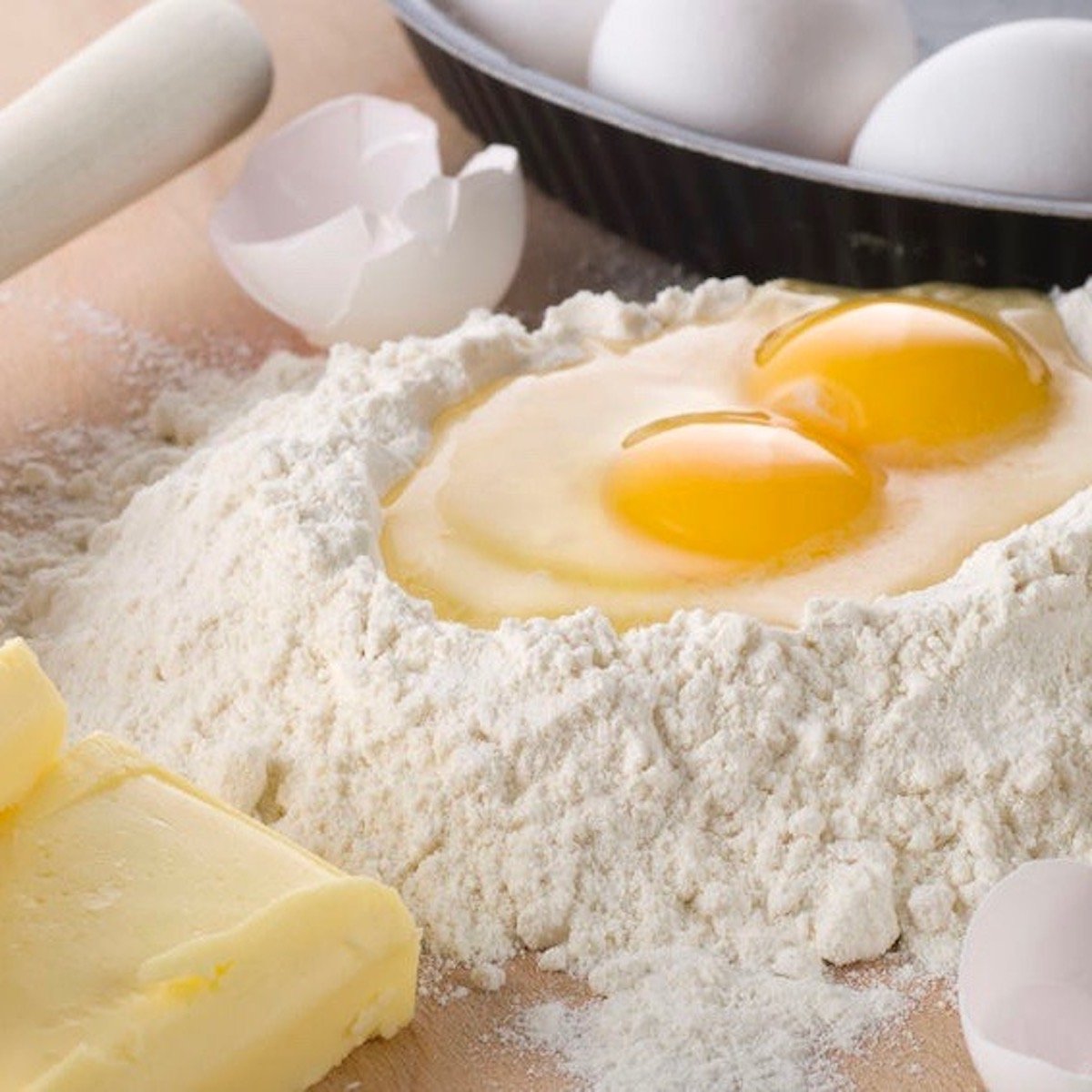
Mistake #4 – Over or Under-Filling Your Pans
Once all your mise en place is taken care of, your oven is well preheated, and your pans are prepared, filling the pans with the right amount of batter is imperative.
If you overfill the pan, you can end up with a cake that overflows and bakes onto your oven floor. If you under-fill the pan, you could have an overly browned, dry cake.
The Fix = Fill Your Pans Properly
Most well-written recipes will tell you how full to fill your pans. If they don’t, they should tell you the size and number of pans you should use.
If a recipe is scaled to be baked in 2 – 9″ pans and you only have 2 – 8″ pans, if you use all of the batter, you will end up with overfilled pans and a mess in your oven.
Conversely, if you use 2 -10″ pans, you will end up with thin, over-browned cakes. Either way, you won’t be happy.
Use the right-sized pan. If you don’t have the right size pans, only fill pans between ½ and 2/3 full.
This will give them plenty of room to rise without overflowing. It will also ensure that you have batter deep enough that it will only bake slowly, resulting in dry, overly browned cakes.
Mistake #5 – Relying on the Stated Baking Time
As stated in Mistake #3, all ovens are different, so not all ovens will bake an item simultaneously. There are a lot more variables than just oven temperature.
You must consider the temperature of your batter, what kind of pan you’re baking in—metal, glass, or silicone—how large your oven is, and how much you’re trying to bake at once.
If a recipe calls for two cake layers, and you’re baking 4, baking times will increase. Likewise, if you’re baking in silicone bakeware, baking time will increase because you’ll miss heat conduction through the sides of the pan since silicone is an effective insulator.
If your oven runs hot, the baking time will probably be less than the recipe states. You can see the problem.
The Fix = Use Your Senses
Consider the baking time more of a suggestion than a law. Begin checking for doneness fifteen minutes before the stated time, then continue to check until it’s done.
If the recipe says the cake will take 45 minutes to bake, don’t blindly take it out of the oven when the timer goes off and assume it is done.
Use your eyes, nose, and sense of touch. The cake should be a deep golden brown (if it’s a white or yellow cake), the kitchen should smell like cake, it might be starting to pull away from the sides of the pan just a little bit, and the top should spring back when you press gently on it.
Further and more accurately, you can test for doneness by inserting a wooden skewer into the center of the cake. The cake should be done if the skewer comes out clean or with only a few crumbs.
If it comes out covered in gooey batter, you’ll need to leave it in the oven for at least a few more minutes. The most accurate way to check for doneness is to take the cake’s temperature. Ideally, your thermometer should register between 195˚F and 210˚F.
To summarize, you can use your senses and some implements to know when your cake is done instead of having to guess, and use the baking time in the recipe just as a guideline.
Mistake #6 – Soggy Cakes, Bread, and Cookies
Once you’ve gotten all your mise en places together, follow all the directions and take your baked goods out of the oven at the perfect time. But first, you’ll want to keep your winning streak going.
There is a better time to start rushing things.
When the recipe says, “Let come to room temperature,” believe it. If you try to hurry and wrap your bread or cake before it is completely cool, you can trap steam in your product.
And that results in sogginess. No fun.
The Fix – Cool Your Heels
Once you take a cake or bread out of the oven, the interior of that product will be right around 200˚F. While gelatinized, the starches in the flour aren’t entirely set because they are too hot.
If you’ve ever tried cutting a loaf of bread straight from the oven, you know you end up with a squished piece of bread. Even a serrated bread knife will shred and smash hot bread. This is because the starches and protein still need to be set up.
As it cools, the starch and protein firm up. This is also true of cakes, so you should keep a cake from its pan for at least ten minutes. If you do, it will likely fall apart.
Even when the starches and proteins have been set up, your bread (or cake, for that matter) is still far from cool. Heat and moisture seem to continue to escape, so wait until it has escaped before wrapping.
Patience is a virtue, especially in baking. Waiting as little as fifteen minutes for cookies or as much as three hours for a dense fruit cake is a small price to pay to keep your baked goods at the proper texture.
My Final Baking Mistake & How to Avoid Them
Mistake #7 – Improper Storage
Once you have taken the time to bake something from scratch, you’ll want to ensure that you keep it at its best. There are four main ways to store baked goods:
At room temperature in a breathable container
At room temperature in a closed container
Refrigerated
Frozen
Different products call for different storage options, and since you’re not baking with preservatives, make sure you choose the right one.
The Fix – Store Your Baked Goods Appropriately
Your recipe should tell you how you should store your baked goods. Generally, bread should be stored loosely covered at room temperature for no more than a day or two.
Any leftovers should be frozen. However, many cookies and un-frosted cakes can be stored and sealed at room temperature for two or three days.
If your cake or cookies contain any ingredients that might spoil – mousses, custard filling, French buttercream frosting, etc. – store them in the refrigerator.
Any baked goods you keep for over a few days should be stored in the freezer.
Read your recipe, understand how your baked goods should be stored, and follow directions. If anything, err on the side of caution so you don’t have to throw away half of your bread or cake.
For example, after my bread cools, I slice it, wrap it well, and store it in the freezer. That way, I can take out a couple of pieces at a time, put them in the toaster oven for a minute, and have bread that tastes as fresh as the day I made it.
Baking Troubleshooting Guide
This is a partial list, but this chart should help you diagnose common baking mistakes.
| The Problem | The Possible Mistakes | The Fixes |
| Bread doesn’t rise | Yeast is dead | Make sure yeast isn’t past its expiration. Proof first in some warm water to make sure it’s alive. |
| Water too hot | Ensure the water is around 100F-115F; water over 140F will kill the yeast. | |
| Too cold in the kitchen | Let dough rise in the oven with the light on—the dough needs to rise in a warm place, about 80F or so. | |
| Bread too dense | To little kneading | Knead until the dough is smooth, silky, and springy. If you don’t knead enough, your dough won’t form enough gluten and won’t rise very high. |
| Rise too short | Give the dough time to rise. A one-rise dough will probably need at least an hour to double in bulk. The second rise (if called for) will probably take at least half an hour to 45 minutes. | |
| Tunnels in muffins | Over-Mixing the dough | Muffins should be incredibly tender. They are almost the opposite of bread—you only want minimal gluten development. When mixing muffin batter, fold the dry ingredients gently into the wet ingredients until just barely combined. |
| Cake never sets up | the pH of the batter is too high | If the batter is too alkaline, your cake won’t set. Make sure that your recipe is balanced. If a recipe calls for regular cocoa powder, do not substitute the Dutch process or alkalized cocoa, or you run the risk of making a pudding cake. |
| Cookies too brown | The oven temperature is too high | Make sure your oven temperature is correct. Don’t walk away from cookies. They are so small that they can over-bake in just a few seconds. |
| Too much sugar | Cut back on the sugar just a bit if close monitoring in the oven doesn’t help. | |
| Using the wrong fat | Switch out a little shortening for all or part of the butter. The butter browns more easily than shortening. | |
| Not brown enough | Not enough sugar | Check your measurements; sugar aids in browning |
| Oven too cold | Know your oven and check the temperature. Monitor closely for doneness. | |
| Too dry / crumbly | Not enough sugar | Sugar not only makes things taste sweet, but it is also a tenderizer. Make sure you have measured correctly. |
| Not enough fat | Fat is also a tenderizer, so make sure you are using enough. But, again, check your measurements. | |
| Domed Cake | Too much leavening | Check your measurements—baking powder and especially baking soda are very powerful. If you use too much, you’ll get an extra rise you don’t want. On the other hand, if you use too much, it could backfire, and the cake could collapse because the structure is torn apart by too many bubbles expanding. |
| Temperature too high | Check your oven temperature. If the temp is too high, the sides could set well before the center, resulting in a dome. Don’t bake in dark cake pans—they will transfer too much heat to the sides of the cake through conduction, making them set and brown too quickly. Use shiny aluminum pans. | |
| Cake too Chewy | Over-Mixing the dough | Overmixing the flour and liquid ingredients can develop a lot of gluten, leading to a chewy cake. Instead, mix just until the batter comes together smoothly. You could also be using the wrong mixing method. Make sure you understand the mixing method before you begin mixing. |

